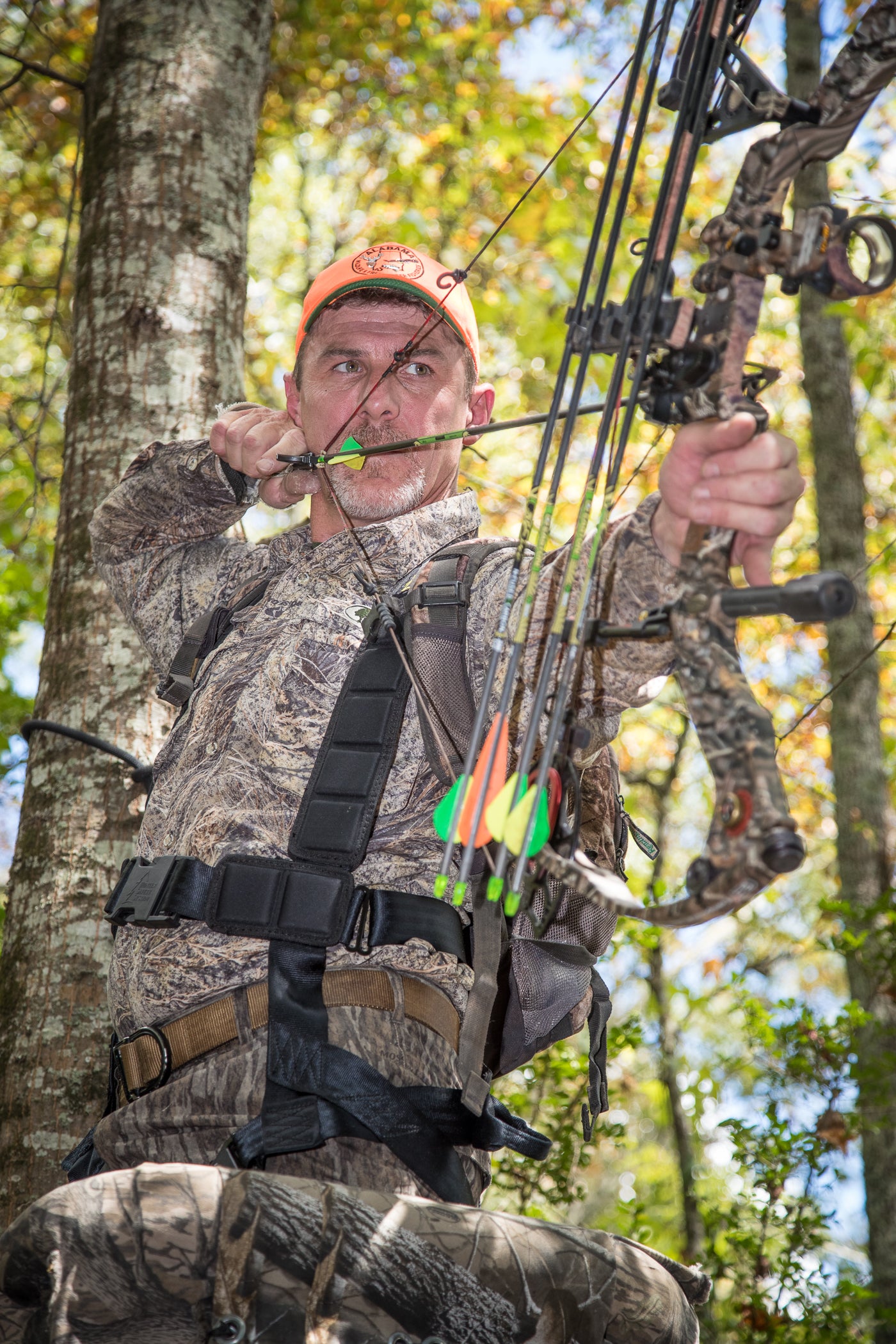Now that hunters have taken to the woods for archery deer season, Alabama Department of Conservation and Natural Resources (ADCNR) Hunter Education Coordinator Marisa Futral hopes those using tree stands will remember to wear and use a vital piece of equipment, the full-body harness.
“It sounds obvious, but wearing your harness and not attaching it to the tree will not save you if you fall,” said Futral. “Most falls occur while ascending and descending, or stepping into and out of the tree stand, so it is extremely important to be attached to the tree at all times.”
Hunters should attach their full-body harness to the tree the moment they leave the ground, and it should stay attached until they are safely back on the ground. “Many hunters are diligent about wearing a harness, but they don’t attach it to the tree until they have already climbed up and are seated,” Futral said. “You are more likely to fall when you are moving, so attaching the harness before you start climbing is vital.”
Once at the desired height, hunters should keep a short tether between them and the tree with no slack when sitting. The tether should be fastened to the tree at eye level or above. This will allow an easier recovery if a fall happens. Never allow the tether strap to get under your chin or around your neck. Hunting bows should be pulled up and lowered with a strong cord or rope. When hunting with a gun, it should be unloaded prior to pulling it up or lowering it.
Hunting is one of the safest outdoor recreational activities. However, each hunting season Futral receives reports on hunting accidents that could have been avoided. Last hunting season in Alabama, there were 10 nonfatal tree stand incidents. In all of those situations, the hunter was not wearing a safety harness.
“While there were no tree stand related fatalities last year, hunters should remain focused on safety this season," Futral said. “Never use a damaged or expired harness. And, most importantly, keep it attached to the tree at all times.”
Follow these tree stand safety guidelines for a safe hunting season
- Always wear a safety harness, also known as a fall-arrest system, when you are in a tree stand, as well as when climbing into or out of a tree stand.
- A safety strap should be attached to the tree to prevent you from falling more than 12 inches.
- Always inspect the safety harness for signs of wear or damage before each use.
- Follow all of the manufacturer’s instructions for use of a safety harness and tree stand.
- Follow the three-point rule of tree stand safety. Always have three points of contact to the steps or ladder before moving. This could be two arms and one leg holding and stepping on the ladder or one arm and two legs in contact with the ladder before moving. Be cautious that rain, frost, ice or snow can cause steps to become extremely slippery. Check the security of the step before placing your weight on it.
- Always hunt with a plan and, if possible, a friend. Before you leave home, let others know your exact hunting location, when you plan to return and who is with you.
- Carry emergency signal devices such as a cell phone, walkie-talkie, whistle, signal flare, PLD (personal locator device) and flashlight at all times. Keep them within reach even while you are suspended in your fall-arrest system.
- Always select a live, straight tree that fits within the size limits recommended in your tree stand's instructions.
- Never leave a tree stand installed for more than two weeks since damage could result from changing weather conditions and/or from other factors not obvious with a visual inspection.
- Always use a haul line to pull up your gear and unloaded firearm or bow to your tree stand once you have reached your desired hunting height. Never climb with anything in your hands or on your back. Prior to descending, lower your equipment on the opposite side of the tree.
- Always know your physical limitations. Don't take chances. Do not climb when impaired by drugs, alcohol or if you're sick or fatigued. If you start thinking about how high you are, stop climbing.
For more hunting safety tips, visit www.outdooralabama.com/hunter-education-alabama/safe-hunting-tips.
The Alabama Department of Conservation and Natural Resources promotes wise stewardship, management and enjoyment of Alabama’s natural resources through four divisions: Marine Resources, State Lands, State Parks, and Wildlife and Freshwater Fisheries. To learn more about ADCNR, visit www.outdooralabama.com.
###






